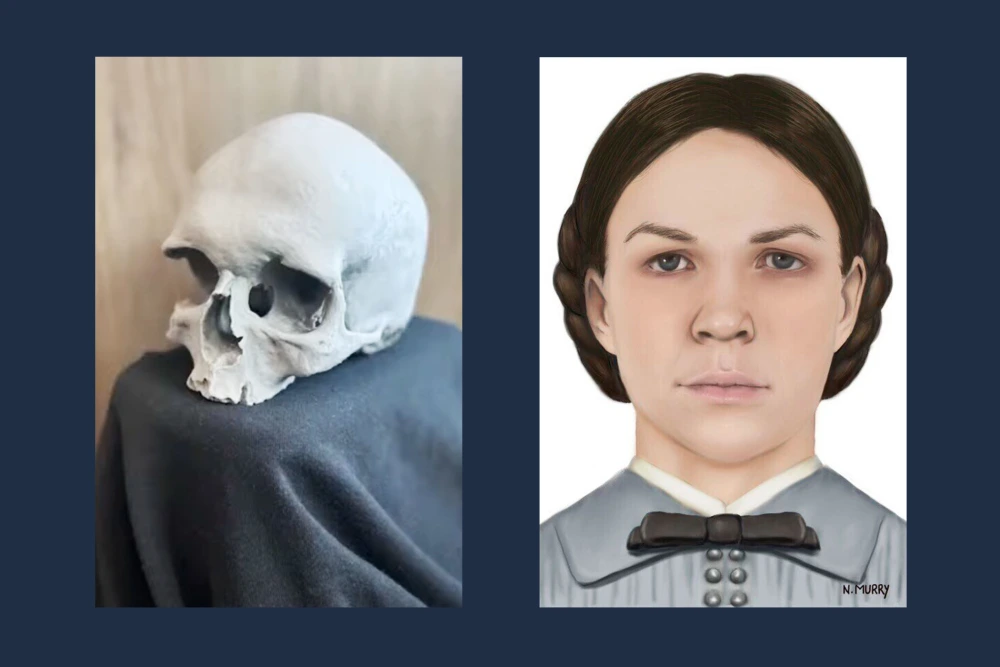
According to DNA testing, an 18-year-old woman who passed away just after the American Civil War was the owner of a skull discovered decades ago in the wall of a home in Illinois, USA.
At a news conference Thursday, October 24, Kane County officials announced that a skull found in 1978 while renovating a home in Batavia, west of Chicago, has been identified as that of Esther Granger, an Indiana woman who passed away in 1866 after giving birth.
According to county officials, they were able to create a family tree and even get in touch with Granger’s great-great-grandson, a living relative, who provided a DNA sample. They created an impression of her probable appearance as well. Authorities have hypothesised that grave thieves may have taken Granger’s remains and transferred it.
The skull was thought to be old, perhaps before 1900, but despite an investigation it had been kept in storage at Batavia Depot Museum for almost 50 years with its mystery unsolved.
It was rediscovered in a box while museum staff were cleaning in 2021. The police were contacted and the coroner’s office began the process of formal identification using modern techniques.
“Esther was born on Oct. 6, 1848 in Indiana. In 1865 at 16 years old she married Charles Granger and after a few months became pregnant with their first child,” Coroner Bob Russell told the news conference.
“In May of 1866, Esther gave birth to a baby girl but lost her life soon after due to complications from childbirth,” he said. Granger was buried in Indiana and the baby was named Esther in her honor.
The DNA of the skull has been sequenced by the county using Othram Laboratories, a Texas business. DNASolves.com was used to crowdfund the project, raising $7,500.
Three weeks later, Othram found Granger’s great-great-grandson, 69-year-old retired sergeant Wayne Svilar of Portland, Oregon, by producing an ancestral match. He was reluctant to participate with the investigation when he was called in April.
“To be completely honest we didn’t believe a word of it,” he told the news conference. “I said, ‘you can keep talking if you want but I don’t believe you.'”
According to Wayne Svilar, who works on cold cases for Multnomah County in Portland and formed a cold case team when employed at the Portland Police Bureau in 2004, he and his spouse believed the call might be connected to one of their previous cases.
“What convinced me that this was not some well-organized scam was their passion for their work,” he said. “There is this sense of closure. I wish my mom were here so I could tell her the story, she would have loved it.”
He went on to say that his own mother was resembled in the drawing of Granger’s face.
Granger’s corpse was buried in Indiana, but how did the head wind up in an Illinois wall? That is the unanswered question.
“We will never definitely know exactly, but with records and good reason we’ve come to a common sense theory: we believe Esther was a victim of grave-robbing,” Russell said.
“Grave robbing was quite common in that era as it was quite profitable. The grave robbers made the equivalent of three to four months’ earnings for the average person working 60 hours a week,” he added.















